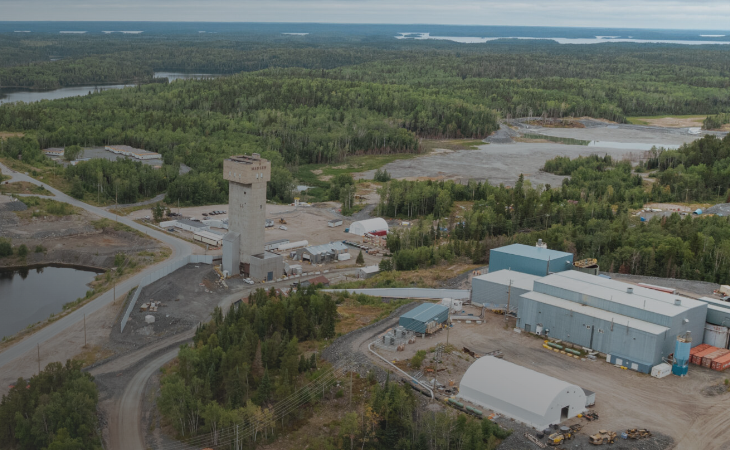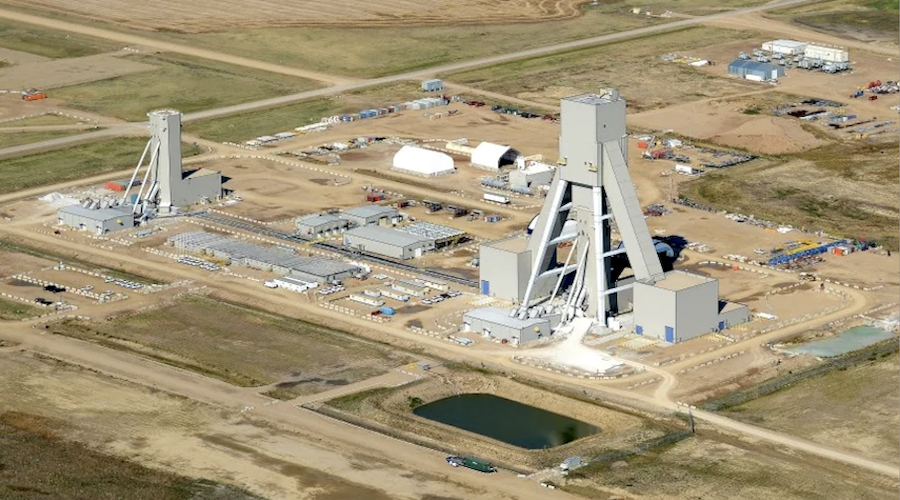VANCOUVER - Western Potash Corp. is pleased to announce the completion of a Scoping Study for a Pilot Plant Scale Selective Solution Mining Operation (the "Pilot Study") on the Company's 100% owned Milestone property in southern Saskatchewan (the "Project"). The Pilot Study is a preliminary economic assessment and was prepared by Novopro Projects Inc. in conjunction with Agapito Associates Inc. The Pilot Study outlines how the Company may effectively exploit the Milestone asset through reduced targeted levels of potential production, using innovative selective potash solution mining techniques, while projecting a reduced CAPEX and competitive OPEX. The Pilot Study includes a resource estimate for the study area.
The Pilot Study reports that the resulting after-tax/royalty projected Net Present Value ("NPV") is $56.7M CAD, with an Internal Rate of Return ("IRR") of 25.2 % assuming a nominal discount rate of 10%, CAPEX of $80.6M CAD, OPEX of $80 CAD per tonne, and a potash price of $315 USD per tonne FOB Vancouver.
Pat Varas, President and CEO of the Company, commented: "In the current pricing environment, it has been very difficult to find solutions for financing and moving the Milestone project forward. In taking a step back and re-scoping the Project, the Company is greatly encouraged by the results of this study, as it projects a significantly reduced risk profile and allows for the staged development of our Milestone project. The anticipated lower CAPEX requirements, alternative potential production scenario and improvement in projected economics will potentially facilitate a fresh look at investment in the Company by a much larger project financing and investment pool. With this new platform, management is looking forward to renewed interest by the investment community to fund the initial development of Milestone."
Rationale for Pilot Study:
The initial Milestone Feasibility Study, delivered and announced by the Company in December of 2012, was designed with a specific strategic perspective: one that focused on financing and project risk reduction while maximizing value, resulting in a large tonnage, long life, mining methodology similar to that used for over forty years at Mosaic's Belle Plaine Potash Solution Mine. The Company has diligently pursued Project finance scenarios that would bring Milestone into potential production on that basis. This process has proven to be challenging given the current potash pricing environment and the broad commodity pricing cycles inherent to the market. Consequently, a new paradigm was required to move the Project forward in order to effectively exploit the Milestone asset while projecting a significantly reduced CAPEX and competitive OPEX, and potentially insulating the Company from these broad commodity pricing cycles.
Results of the Pilot Study:
The Pilot Study provides an analysis of the potential for selective mining of the Milestone deposit, starting with a smaller scale, low capital cost pilot project. Included in the study is an analysis of a selective mining method relying on horizontally drilled wells selectively mining initially the Esterhazy potash member. The method of selective solution mining has been proven in industry; however, the exact mining method proposed in the Pilot Study has not to date been utilized in Saskatchewan. Other examples of producing operations employing some key aspects of the Pilot Study selective solution mining method include Intrepid Potash, Moab, Utah (Potash), who solution mine potash from flooded underground workings and horizontally drilled caverns, and ETI Soda, Turkey (Trona) and Natural Soda, Colorado (Nahcolite), who both solution mine using horizontal wells.
The Pilot Study envisions the simultaneous operation of three pilot production caverns. The horizontally drilled wells inject a Sodium Chloride (NaCl) saturated brine having a temperature higher than the in-situ rock formation temperatures. Potassium Chloride (KCl) is then selectively dissolved within the potash formation, leaving a lattice of NaCl behind. KCl rich brines are then brought to surface through each production well. KCl recovery is achieved through delivery of the resultant KCl rich brine to a surface crystallization facility, producing 145,600 tonnes of standard grade MOP per year.
The Pilot Study produced preliminary process flow diagrams, site layout drawings, mining cavern and drill pad layouts, along with equipment lists and other engineering data. Estimates of capital and operating costs were developed to AACE Class 4 +/- 25% capital and operating cost estimate standards.
Some of the advantages of the proposed methodology are:
- the capital cost will be less than for conventional solution mining;
- the surface foot print will be reduced due to the absence of a salt tailings facility; and
- the Project will provide a scalable production facility that has the potential to be expanded to meet future market requirements and changing investment appetites.
For more information, visit www.westerpotash.com.





Comments